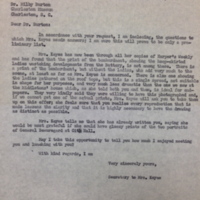Queen of Fiction : Inhabiting
It is in Louisiana that Keyes found the settings for her most popular novels. According to her son Henry, the most important change in her life, next to her conversion to Catholicism, was her move to Louisiana. Her first Louisiana novel is Crescent Carnival (1942). It was followed by The River Road (1945), Once on Esplanade (1947), Dinner at Antoine’s (1948), Steamboat Gothic (1952), Blue Camellia (1957), Victorine (1958), The Chess Players (1960), and Madame Castel’s Lodger (1962). Keyes also wrote All This Is Louisiana: An Illustrated Story Book (1950) that highlights the history, culture, and people of a place that became as much a part of her “mixed environment,” (to use her phrase from her 1918 Atlantic Monthly article), as Virginia, Vermont, and Boston.
The Los Angeles Times reported that when Keyes “decides upon the locale for a novel, she goes there to live, doing her research and writing on the scene of action and observing the many angles of her neighbor’s days, learning their local customs and dishes.” [1] In her Life magazine interview with Robert Wernick, Keyes stated that she would not write about a place where she had not shopped, cooked, or lived and her books show this dedication to inhabiting a place before composing a story. The Old Gray Homestead (1919) and The Career of David Noble (1921) are set in villages of New England’s Connecticut River Valley, as are Lady Blanche Farm (1931), The Safe Bridge (1934), and Also the Hills (1943). Boston and its surroundings appear in Joy Street (1950) and The Heritage (1968), while Virginia and Washington, D.C. are settings for Queen Anne’s Lace (1930), Honor Bright (1936), All that Glitters (1941) and The Heritage (1968). A number of Keyes’s novels mingle together the subjects of war, diplomacy, and romance in American, European, and British settings. Senator Marlowe’s Daughter (1933) and The Great Tradition (1939) begin this vein of writing and Came a Cavalier (1947) and The Royal Box (1954) continue it.
Virginia Kirkus, writing in The English Journal in 1951, assessed Crescent Carnival as the novel that lifted Keyes “from the ranks of a better-than-average storyteller, with all the particular elements that were evidenced in the scope of her writing, to a writer who was contributing something vital and lasting to the American literary scene.” Kirkus attributes this advance in skill to the fact that Keyes was living in New Orleans, where the “drama of the Mardi Gras had caught her imagination.” Once she had her inspiration, she followed through with serious research and the result was “a good tale.” [2]
Inhabiting a place and research went hand-in-hand as Keyes composed her novels and her non-fiction works. So too did rotating the settings of her novels. After working on a novel set in Louisiana she would turn her attentions to a New England story. She rotated her settings like she rotated her life: winters in Louisiana, summers in New Hampshire, and the rest of the year traveling. When she first arrived in Louisiana she lived in a “cottage” (with twenty rooms) eight miles south of Baton Rouge. Once a great plantation house, the structure was vacant and mostly abandoned when she moved in. She stayed there to complete her novel, The River Road, despite having “no telephone, no mail service, no drinking water, and no delivery of any staple commodity.” [3]
While living on the River Road, Keyes often traveled to New Orleans for research, medical treatment, conferences, and to visit friends and colleagues. Wartime rationing, however, made travel difficult and Keyes seized the opportunity to move to New Orleans after being told about a room that was available in a rundown house in the French Quarter. She moved into the Beauregard House on Chartres Street a week later. Keyes was enthralled with the rich history of the house and two of her novels, The Chess Players and Madame Castel’s Lodger, tell its story. The first focuses on Paul Morphy, who lived in the house as a young boy and went on to be one of the world’s greatest chess players. The Beauregard House was built by Morphy’s maternal grandfather, Joseph Le Carpentier. [4] The second book is a fictional biography of General Pierre Gustave Toutant-Beauregard, who lived in the house for eighteen months during the Civil War and is best known for giving the order to fire the first shot at Fort Sumter.
In Louisiana, Keyes drew on local historians, friends, and colleagues to help her with research and, at times, writing. She was always generous in crediting the help she received, acknowledging contributions of researchers and others in the author’s notes to her novels and, privately, providing monetary compensation for their work. Public pronouncements and private recompense began early in her career, continued even when money was tight, and increased as she was more successful. An early example concerns Lois Greer of Newbury, Vermont, who shared family letters that formed the basis for The Safe Bridge. Correspondence shows that after its publication, Keyes provided monetary compensation to Greer and her family for her help. She acted similarly with Alice de Riano, who shared a diary that was incorporated into Senator Marlowe’s Daughter and The Great Tradition. Another example is that of Hermann Deutsch, who collaborated with Keyes from about 1945 until just before her death. According to one source, Deutsch, who Keyes called “one of my best editorial advisors,” received fifty percent of Keyes’s royalties for Dinner at Antoine’s. [5] [The Keyes-Deutsch correspondence is located in the Hermann Bacher Deutsch Papers, Special Collections, Tulane University. Tulane also has a collection of Keyes papers.]
Notes:
1) Clementine Paddleford, “River Recipes,” Los Angeles Times, March 17, 1946. ↵
2) Virginia Kirkus, “The Value of the Best Seller: An Appraisal of Frances Parkinson Keyes,” The English Journal, 40:6 (June 1951): 303-307, quote on 306. ↵
3) FPK, Author’s Note to Madame Castel’s Lodger. ↵
4) Michael L. Kurtz, “Paul Morphy: Louisiana Chess Champion,” Louisiana History (Spring 1993): 175-199. ↵
5) FPK, Author’s Note to Blue Camellia; Carolyn Kolb, “Frances Parkinson Keyes and Crescent Carnival,” Louisiana Cultural Vistas (Fall 2010): 82-91. ↵
Related Documents:

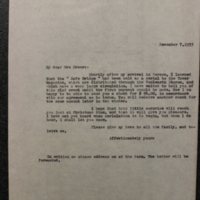
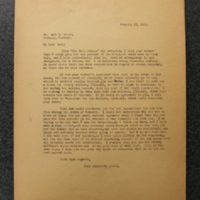
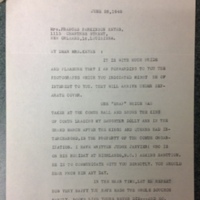
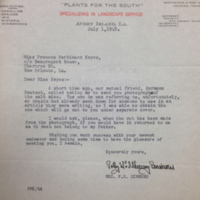
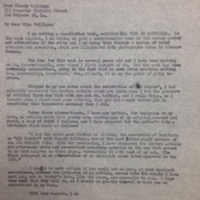
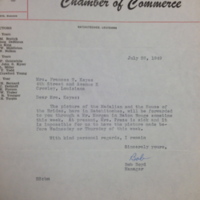
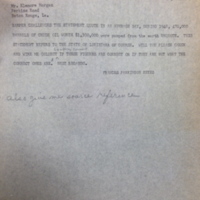
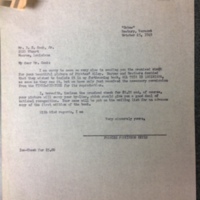
![Manuscript chapter for "All This is Louisiana" [1949] Manuscript chapter for "All This is Louisiana" [1949]](http://libraryexhibits.uvm.edu/omeka/files/square_thumbnails/445aa48cfc6a534fddb6efeea1ec7f46.jpg)
